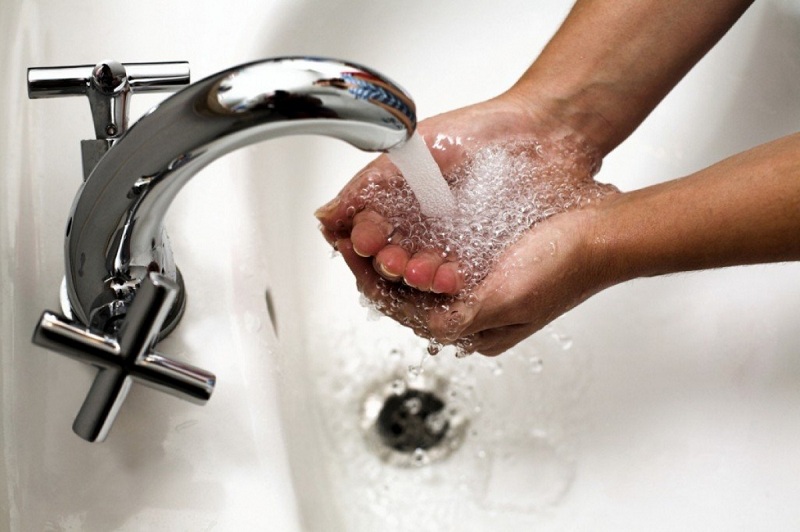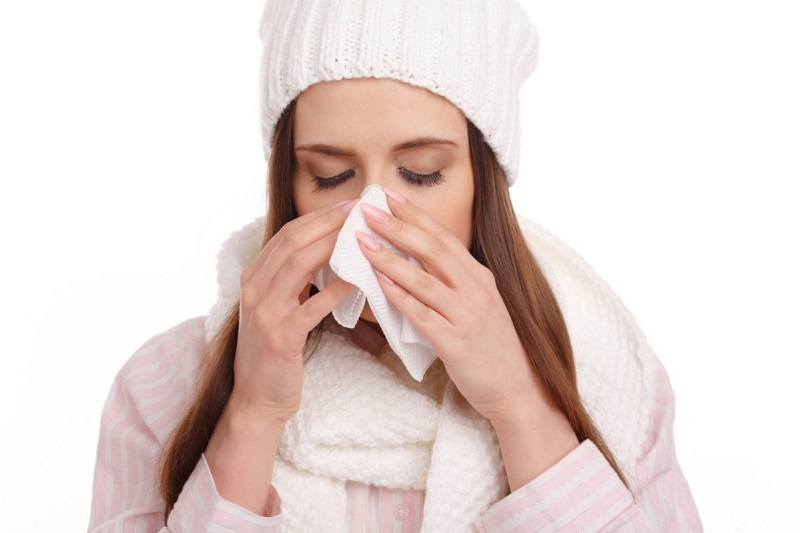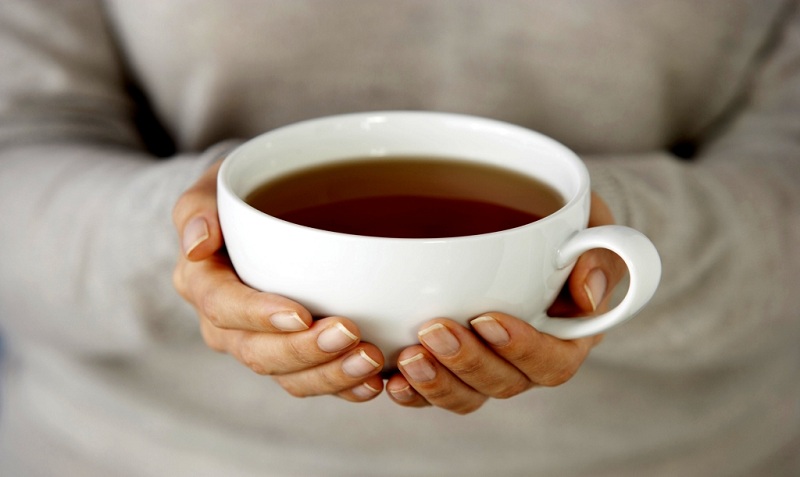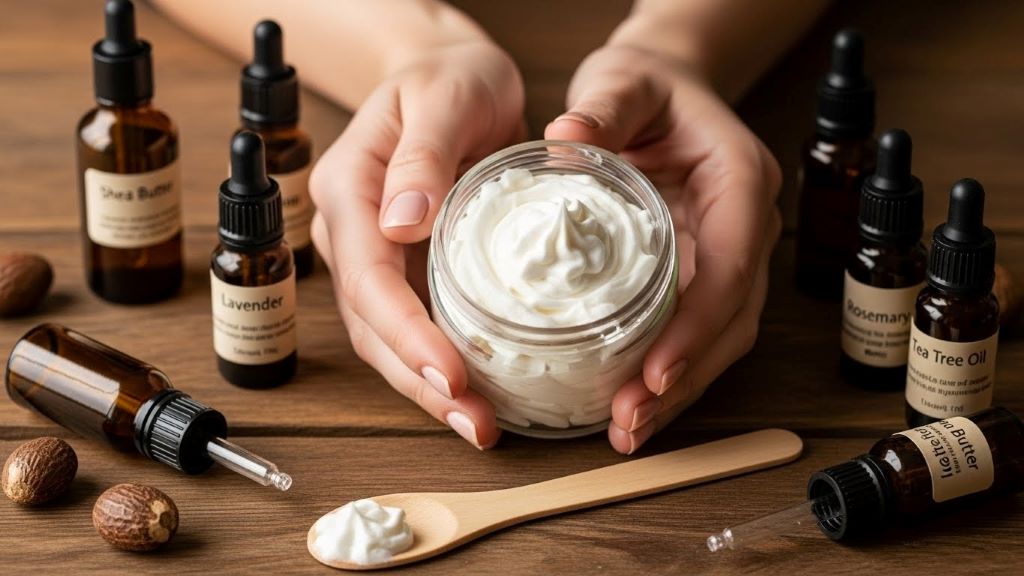Cold allergy – the body’s reaction to low temperatures, manifested in the form of irritation of the skin. On the dermis, susceptible to frost, peeling, and itching, erosion, and redness are observed.

It is interesting! Not so long ago, medicine officially did not recognize the diagnosis of “cold allergy,” since it rejected the possibility of considering temperature as an allergen. No allergen means no reaction to it. However, studies have shown that in some people, under the influence of a “minus”, there are releases of histamine, the excess of which contributes to vasodilation, the appearance of edema, causing itching of the skin and mucous membranes.
Causes of cold allergy
The medicine did not reveal the exact cause of the pathology, however, it names the provoking factors of allergy:
- an abrupt change of a person’s stay in a room with a normal temperature for an environment with negative indicators, which is important in winter weather conditions;
- contact with cold water (cleaning, bathing in reservoirs);
- Eating cold food, drinks.

In a strong, healthy body with good immunity, the development of the disease is not observed. However, as soon as the defenses are reduced, a quick manifestation of allergy is possible. The weakening of the body causes the use of antibiotics, problems with the endocrine system, organs of the gastrointestinal tract, the presence of colds and chronic diseases, cancer disorders.
Cold allergies are also provoked by:
- Hereditary predisposition to allergic diseases, the presence of close relatives with high sensitivity to cold.
- Vascular discomforts, characterizing the deterioration of blood circulation, blood circulation disorder.
- The presence of recurrent diseases of the dermis – eczema, psoriasis.
- The presence of allergic reactions to other types of irritants (domestic, food, flower).
- Frequent contact with cold media.
The pathogenesis of pathology is based on a reaction triggered by the irritable effects of low temperatures on the body and, as a result, the release of large amounts of histamine. The inflammations circulating in the vessels cause swelling of the mucous membranes and the dermis, damaging the cells.

Attention! The test for cold allergies can be done at home. It is enough to put a piece of ice on the elbow. If in 15 minutes the first signs of urticaria appear on the skin, it is worth assuming that your body is prone to pathology.
Remember that an allergic reaction can occur not only through direct contact with frosty air. The mediator of inflammation often becomes a banal draft, contact with cold water when cleaning or washing dishes.
Symptoms of cold allergy
Symptoms of an allergic reaction include skin lesions on unprotected parts of the body (hands, face), irritation of mucous membranes (nose, trachea, and throat). There are several types of pathology, each of which has specific features:
- Cold urticaria, characterized by severe itching and numerous rashes on the body, the type of blistering and puffiness that appear when in contact with nettle.

- Cold dermatitis, causing severe peeling of the skin, causing redness and swelling of the dermis. A few days after contact with cold, small bubbles form on the body, opening of which threatens to form erosions, and after – covering the dermis with a scab and scars.
- Cold conjunctivitis, suggesting severe tearing in the cold, cutting and pain in the eye area.

- Cold rhinitis, characterized by the appearance of nasal congestion when in an environment with a minus temperature. As soon as a person is indoors, the symptoms of a cold can disappear.
- Cold asthma, manifested in laryngeal edema, bronchospasm and often observed in people prone to pneumonia.

Attention! Often, this type of allergy is confused with ARI, acute respiratory infections, and other viral ailments. However, allergies rarely suggest fever.
Finding a rash, blisters on the skin, burning, and itching of the dermis, swelling of the mucous membrane, headache, and chills, immediately consult a doctor who is obliged to diagnose cold allergies and, with a positive result, help the patient to get rid of the problem.
Allergy to cold: what to do?
Treatment of pathology is possible with the use of medical devices and traditional methods. Choosing the first option to be sure to consult with your doctor; Preferring recipes grandparents, carefully read the instructions, just following all the recommendations and dosage.
Allergy Medications
To cure the affected skin and mucous membranes will help drugs of different pharmaceutical groups:
|
Group Preparations Antihistamine tablets, capsules “Zyrtec”, “Levotsetrizin”, “Tsetrin”, “Tavegil”, “Klaritin” Antihistamine ointment “La Cree”, “Gistan”, “Skin Cap” Auxiliary cream for irritations “Panthenol”, “Depantenol” Antihistamine nose drops “Fenistil”, “Allergodil”, Ethnoscience |

Popular tools that have proven their effectiveness are:
№1. Mumie. Mix 1 g of a raw mummy with 1 liter of boiling water. Stir the mixture until the precipitate is completely dissolved. Take a drink once a day with a daily dose of 100 ml.
№2. Walnut. It is recommended to make tinctures from this product, which are distinguished by a wide spectrum of action – bactericidal, anti-inflammatory, antiallergic. To prepare the mixture will need:
- 50 grams of crushed fresh leaves and green walnut pericarp;
- 100 g of vodka.
Mix the ingredients, infusing the mixture in a glass, tightly closed container for a week, shaking the composition daily. Strain the tincture, taking the medicine 3 times a day, 25 grams for half an hour before meals (preferably diluted in a cup of water).

Number 3. Lemon juice. Schizandra juice helps to fight against intolerable allergic itching – wipe damaged skin on them after returning from the street.
№4. Healing herbs. Cold allergy on the face perfectly treats emulsion of calendula, celandine, mint, and burdock. Mixing 10 grams of each of these herbs, pour the composition with sunflower oil – so that the liquid level is 1 cm above the level of the grass. Let the mixture stand for a day, then sterilize it in a water bath, stirring gently. Wipe the skin with an emulsion – it relieves itching and prevents peeling.

№5. Needles. A great way to combat allergic reactions on the body – a bath of pine needles. Boil the sprigs of coniferous tree, adding the learned broth to the water, recruited to take a bath.
Important! Before you treat allergies folk remedies, make sure the body tolerates all components of the prescription.
Finding minor symptoms of the disease, it is worth gradually hardening, wiping, which helps strengthen the immune system and reduce the body’s response to cold. However, with intense symptoms of hardening is contraindicated and fraught with the appearance of complications in the form of edema, anaphylactic shock.

Pathology Prevention
Preventive measures are aimed at preventing the exacerbation of cold allergies and consist of:
- Maximum warming at sub-zero temperatures – do not forget to additionally protect your feet with warm tights, neck with a cozy scarf, and hands with good winter gloves.
- Treatment of skin with creams – before going out, it is necessary to smear the skin of the face and hands with a special cream that protects against the cold (can be replaced with ordinary fat cream). Use also hygienic lipstick.
- If possible, drink a warming drink before the walk – tea, warm milk.
- Try to breathe through the nose, taking shallow but shallow breaths at first, gradually moving to the usual rhythm.
- Revise the diet – include more nuts, fish, olive oil.

And finally! The most effective method of dealing with the cold – is to strengthen the immune system. Move more, eat right, reduce bad habits, rejoice your life and smile more often – all diseases will bypass your body!


